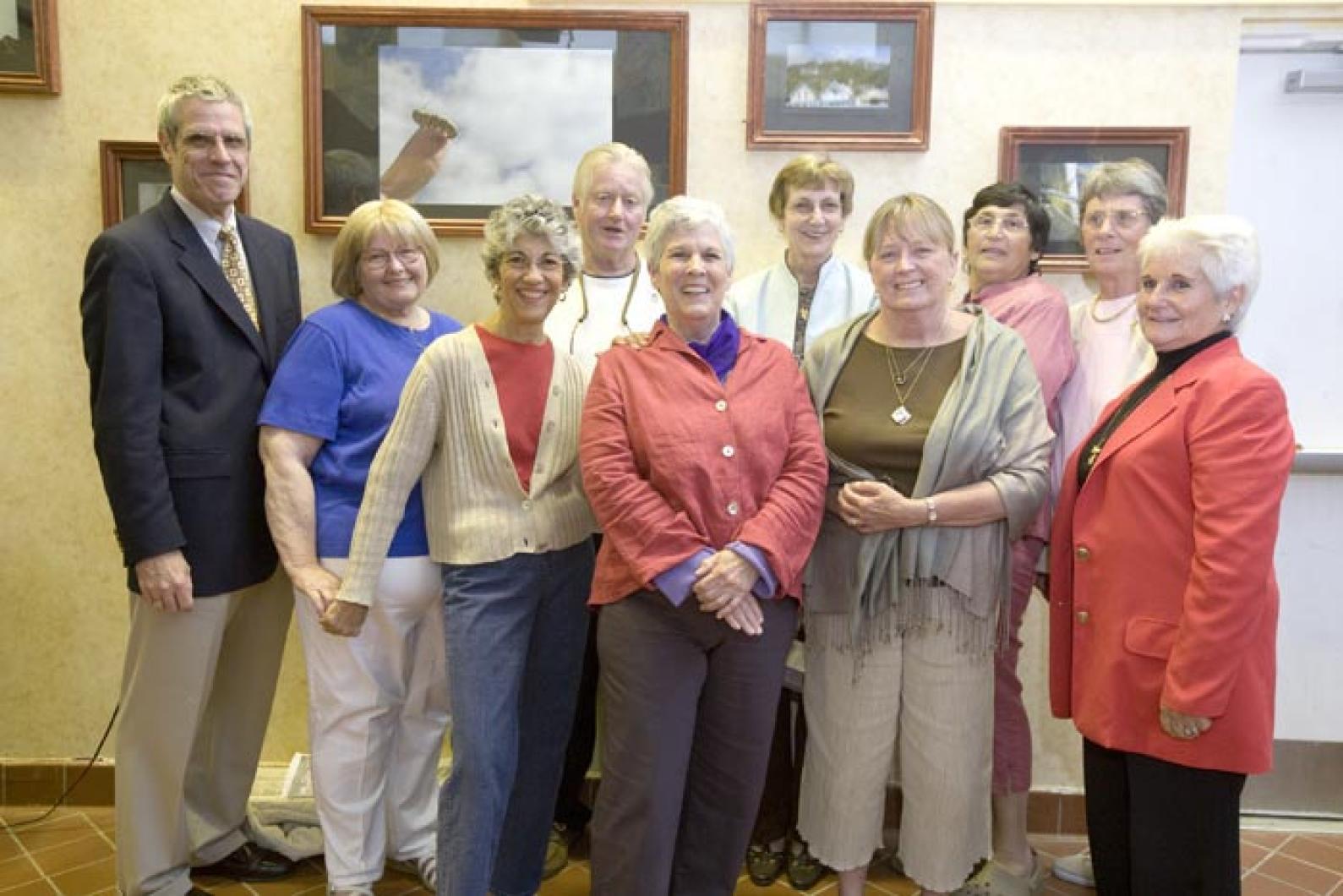It was an informal class reunion Monday evening, when a small group of the very first graduates of Martha’s Vineyard Regional High School gathered again at their alma matter.
“This year’s graduating class is the 50th. I thought it would be nice to bring back the first,” said regional high school principal Steven Nixon. “Then we’re going to have them participate in the graduation ceremonies.”
The class of 1960 will be invited to walk down the aisle with the 2009 candidates next Sunday, and its members will be honored with a certificate on stage.
Two of the first graduates run the risk of bumping into a close relative on that stroll down the graduation aisle. “Donna [Gazaille] and I each have a grandchild who’s actually graduating in our 50th year,” said Sandra Ann Brown Arnold proudly. She is the grandmother of 2009 prospective graduate Shane Schofield. Ms. Gazaille’s grandson, Darren Gazaille, is also slated to graduate on June 14th.
Altogether, nine of the 53 students in the first graduating class assembled Monday to reminisce about their single year as regional high school students.
The way the former students tell it, the establishment of a single high school institution on the Island was somewhat unwelcome at first. The old grievances were reported lightheartedly, however, by a group clearly delighted to share one another’s company.
“It was very difficult, you have to understand. We were the first class. We were used to having Tisbury, Edgartown and Oak Bluffs [high schools], and then they wanted us to come together and be good buddies,” recalled alum Elsie Kingsbury Gilman.
“It was hard on everybody, I think . . . especially in sports. We all played against each other, and all of a sudden we’re all put together,” recalled Mrs. Arnold. “We used to cry when we lost,” added Judy Williamson, a former member of the basketball team.
Though rivalries, especially those involving sports, at first threatened to divide the class of 1960, the emotional climate in the dining room suggested that tensions between students from different districts quickly passed, making way for strong friendships and lifelong connections.
“It didn’t take very long . . . we did come together to be a unit,” recalled Mrs. Arnold.
“The fact that we all got along was kind of a nice thing. And we did get along. It was really great,” added Ms. Gazaille.
Still, adjusting to the new school was somewhat bittersweet for most students. “It was exciting, and we were happy, but we were all a little sad at the same time, because we weren’t in the school we had gone through all those years,” recalled Ms. Williamson.
“You go through 11 years in one building, and all of a sudden you graduate in one year in another building. It was difficult for everybody,” explained Mrs. Arnold. “But we all understood you have to start somewhere.”
Discussion turned to cheerful grumbling over their senior trip — or rather, the lack thereof.
“Every high school graduating class went on the Washington (D.C.) trip. That was the big thing,” said Ms. Williamson. “We didn’t go away like people do today, so [the trip] was a huge deal,” added alum Catherine Amaral Deese.
In 1960, the school decided to spend the class trip money instead on its first yearbook. “Cancelling the Washington trip was a big deal,” said Ms. Williamson.
“No matter how far back you go in the schools they all remember their Washington trip. And we all felt very deprived. We had to have a bloody yearbook,” joked Ms. Amaral Deese. “Now we all love it,” she added.
Ms. Amaral Deese was finally able to see Washington, D.C., years later as a chaperone for her child’s class trip. “I was going come hell or high water,” she said.
“Was that when Abraham Lincoln was president?” teased classmate Michael Carroll.
“Oh yes,” she responded, smiling.
The camaraderie between these former classmates, who entered the high school as rivals and departed as friends, is still evident. Fifty years later, they fill a room with easy laughter and lively conversation. The group seems an appropriate representation of the school that unites an entire Island into a single community.




Comments
Comment policy »